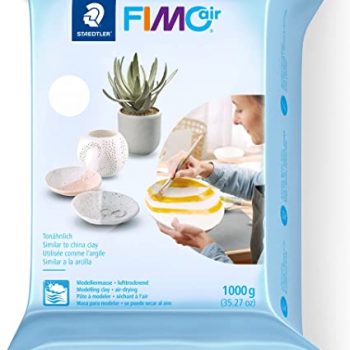Fimo Air – air drying modelling clay – 1KG White
Original price was: €6.95.€6.25Current price is: €6.25.Fimo Air is an air drying, white modelling clay. It hardens in the air and is paintable with acrylic paint or poster paint. Ideal for small to medium sized projects.

